Question:1
When another vehicle drives in the turning left only lane:
Category : Rules and Regulations
Question:2
To whom should a holder of a driver’s license or vehicle registration report a change of address within 15 days?
Category : Rules and Regulations
Question:3
When are we not obligated to drive in the right lane?
Category : Rules and Regulations
Question:4
A vehicle which emits oil or smoke above normal levels:
Category : Rules and Regulations
Question:5
What should you do when facing a structure, post or closed area, while driving on a one-way roadway?
Category : Rules and Regulations
Question:6
What is “night time”?
Category : Rules and Regulations
Question:7
The following picture shows a pavement. Which of the following sentences is correct?
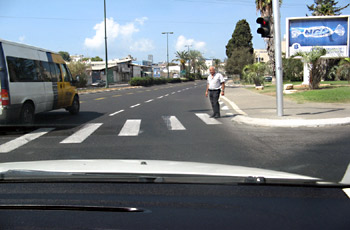
Category : Rules and Regulations
Question:8
When is it forbidden to overtake, or to try overtaking, another vehicle?
Category : Rules and Regulations
Question:9
The speed limit for an commercial tractor (mule) on an inter-urban road is:
Category : Rules and Regulations
Question:10
Upon completion of the two year “new driver” period, a regular driver’s license will not be given to a “new driver” who was convicted of:

Category : Rules and Regulations
Question:11
Is the Licensing Authority (Licensing Bureau) permitted to delay the renewal of a driving license for a person who has a pending fine?
Category : Rules and Regulations
Question:12
In which vehicles are the driver and passengers required to wear seat belts?
Category : Rules and Regulations
Question:13
The license of a “New driver” will not be renewed as a regular drivers license, if he is convicted of:
Category : Rules and Regulations
Question:14
Define “one way street”
Category : Rules and Regulations
Question:15
What is a “security vehicle”?
Category : Rules and Regulations
Question:16
What should a driver do after parking his vehicle?
Category : Rules and Regulations
Question:17
A policeman is permitted to issue a “vehicle non-use notice” (taking a vehicle off the road) when:
Category : Rules and Regulations
Question:18
When are you obliged to signal before moving out of your lane for the purpose of overtaking?
Category : Rules and Regulations
Question:19
According to the traffic sign placed on the right, How would you conduct yourself on the road ahead?

Category : Rules and Regulations
Question:20
What are you (vehicle no. 3) required to do when approaching the following intersection (the red vehicle is not an emergency vehicle)?
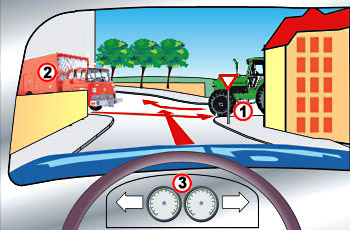
Category : Rules and Regulations
Question:21
What is the definition of an “obsolete vehicle” in regard to private passenger cars?
Category : Rules and Regulations
Question:22
What types of vehicles are permitted to park in a bus station, besides the bus itself?
Category : Rules and Regulations
Question:23
Is it permitted to drive on the sidewalk in order to pass a road obstacle?
Category : Rules and Regulations
Question:24
The license of a “new driver” shall not be renewed as a regular drivers license if he is convicted of the following offence:
Category : Rules and Regulations
Question:25
You are approaching a tunnel with a road sign displayed in front of you and want to overtake a slow vehicle driving ahead of you:
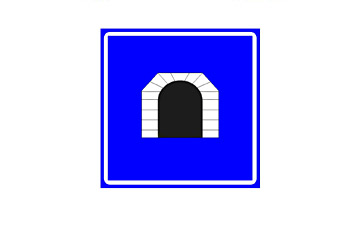
Category : Rules and Regulations
Question:26
To which of the following should you give right-of-way when making a left turn in an intersection where no road sign is placed?
Category : Rules and Regulations
Question:27
According to the law, in what order should vehicles enter the following intersection?
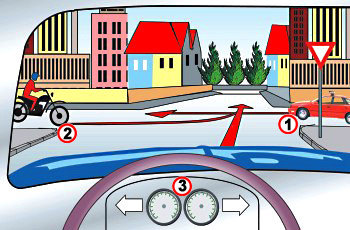
Category : Rules and Regulations
Question:28
Is it obligatory to obey the directions of a Public Works Department employee in uniform?
Category : Rules and Regulations
Question:29
According to the following picture, is it permitted to make a U-turn?
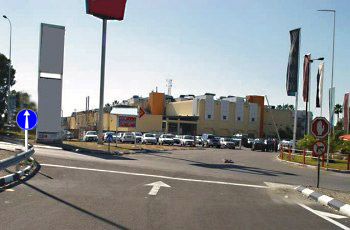
Category : Rules and Regulations
Question:30
You are driving vehicle no. 3 before an intersection without traffic signs. According to the rules of giving right-of-way, in what order should vehicles that arrived at the same time enter the intersection?
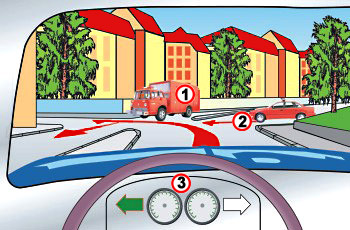
Category : Rules and Regulations

